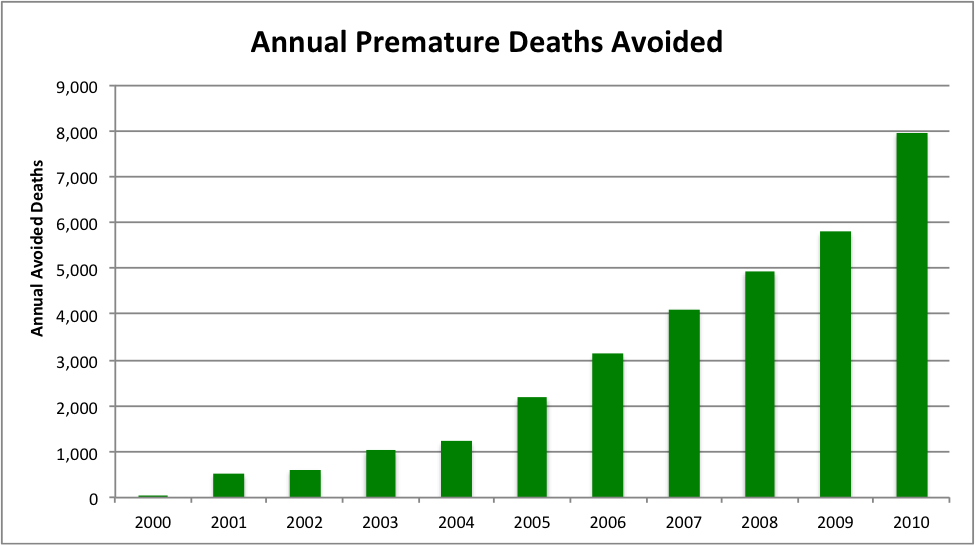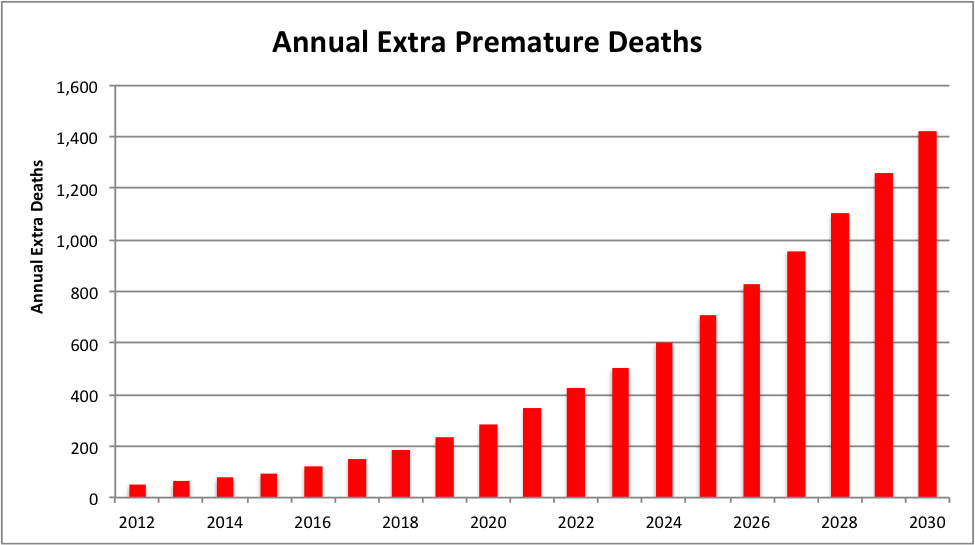Blog
The Harsh Calculus of Dieselization in India
A colleague of mine recently made the offhand remark that continuing dieselization of India’s vehicle fleet was going to erase the health benefits gained from vehicular air pollution control measures over the last decade. However casually formulated, it struck me as an interesting and testable hypothesis, and a good simple trial for a model that we’ve been developing to assess the impact of vehicular fine particulate matter emissions (PM2.5) on premature mortality in urban areas. I ran some numbers through the model to see how accurate my colleague’s off-the-cuff estimate of the impact of diesel vehicles in India might actually be.
Roughly 17% of the passenger car market in 2000, diesel vehicles now account for over 40% of all new passenger car sales, buoyed by government subsidies for diesel fuel. If this trend continues, the diesel share of the Indian market can rise to about 60% by 2030—comparable to the European market today.
India has taken steps to reduce emissions from all vehicles. Particulate matter (PM) emission limits for new diesel passenger vehicles and commercial vehicles were lowered by 98% and 84%, respectively, between 2000 and 2010. Our model—which estimates changes in premature mortality based on World Health Organization (WHO) derived correlations between ambient fine particulate matter (PM2.5) and cardiopulmonary mortality—estimates around 26,000 premature deaths have been avoided as a result. The chart below breaks down that aggregate number into year-by-year estimates from 2000 to 2010.
Yet emissions from new diesel vehicles in India remain about as toxic as emissions from gasoline vehicles were before the turn of the century, largely because diesel cars are still allowed to emit three times as much NOx and an order of magnitude higher PM under Indian regulations. Gasoline cars, on the other hand, have almost no PM emissions. So the shift to diesel vehicles from 2000 to 2010 led to almost 6,000 extra metric tons of extra PM2.5 emissions, which equates to around 240 additional premature deaths—potentially avoided deaths “given back,” so to speak.
Taking 26,000 deaths, then, as the benefit threatened with being “erased” by dieselization, what does the future look like?
The chart below shows projected additional premature deaths in Indian cities from 2012 to 2030, assuming India does not impose more stringent vehicle emissions control measures and the diesel share of the new vehicle market continues to grow at the same pace as it did from 2000 to 2010. The total number of additional premature deaths attributable to extra PM emissions from diesel vehicles is about 9,400 by 2030. That’s over a third of the premature deaths avoided from 2000 to 2010.
As a solution to the problem, many, including the Kirit Parikh committee, have proposed an additional excise tax on diesel cars to reduce the incentive for their purchase. In the absence of diesel subsidy reform and tighter emissions standards, it appears that such a tax would be a good idea. If India were to implement clean vehicle and fuel standards as stringent as those in Europe, the US, and Japan, PM emissions from diesel vehicles would fall to about the level of those of gasoline vehicles. By doing this, the full benefits of dieselization, in terms of reducing CO2 emissions, could be realized, without causing adverse health impacts. Since India’s vehicle fleet is expected to grow further in the coming decades, the potential public health and economic benefits are enormous. All the more reason to act soon.


